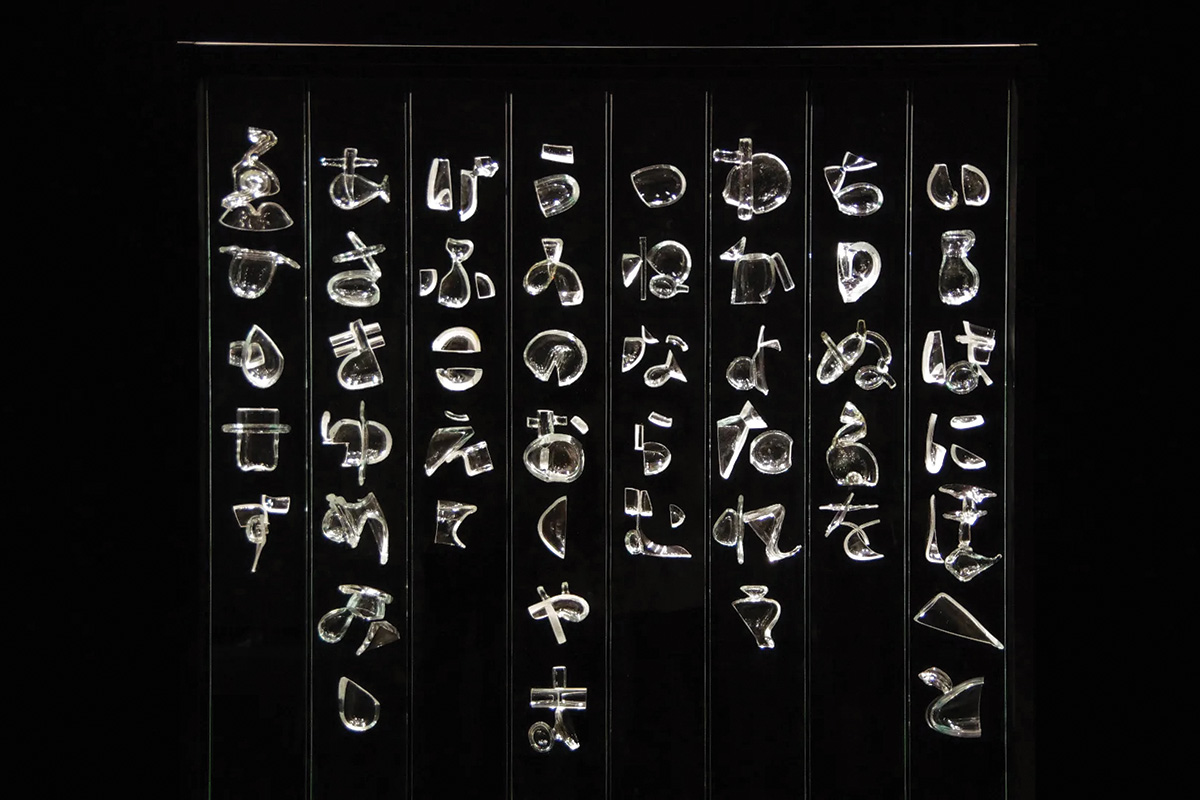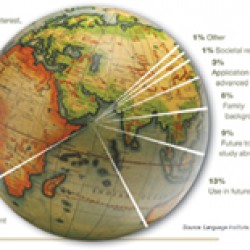
Works like Iroha (2013) push the boundaries of glass art. Each glass piece is a character of an ancient Japanese poem. COURTESY OF HELEN LEE
In Helen Lee’s office sits a gleaming table of flawless glass vessels. Closer inspection reveals that the cut mark at the base of each vessel produces a character of the alphabet. The collection is an example of how Lee’s training as a graphic designer informs her glassblowing practice and how her fascination with language in its various forms manifests at the end of her blowpipe.
“One thing that has brought me great pleasure is finding shared vocabulary between glass and design thinking,” Lee says.
Lee is the director of the UW Glass Lab. It was the first facility of its kind on a college campus when UW professor Harvey Littleton founded it in 1962, and it remains revolutionary to this day. Its students and alumni push the boundaries of glass art by using the medium to explore other fields of study. It’s fitting that this generation of students is inclined to pursue interdisciplinary practices under Lee, whose own art engages with questions of language, legibility, and meaning.
“I’m interested in people’s relationship to language as a thing that exists in our brains, but also a thing that exists in the physical world,” Lee says. “[Glass] suspends the work right on that cusp between the two, where the viewers really have to reconcile the work both as language and as object.”
One such piece is Alphabit, a cabinet of glass type that organizes the glyphs of a standard QWERTY keyboard into backlit letterpress type trays. Each of the 68 glyphs is rendered in a 15th-century glass technique that parallels the infinitely scalable nature of modern graphic typography.
Lee’s artistic interest isn’t limited to language. In one piece, a brood of green glass cicadas references the historical use of the material to imitate highly desirable jade in ancient China. Another translates the familiar object of a metal Chinese coin into a transparent, glass form. And another is designed not for its aesthetic appearance, but for the sound it produces when activated.
“I’m using glass in wildly divergent ways and tapping into a huge range of histories,” Lee says. “It just speaks to how incredibly diverse and also wildly ubiquitous the material is in our lives.”
Published in the Winter 2023 issue



Comments
Bubblevy January 16, 2024
Wow amazing!
Laurent January 16, 2024
Very beautiful and amazing